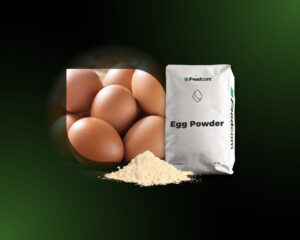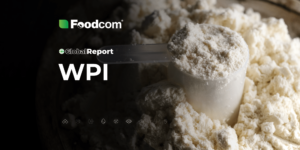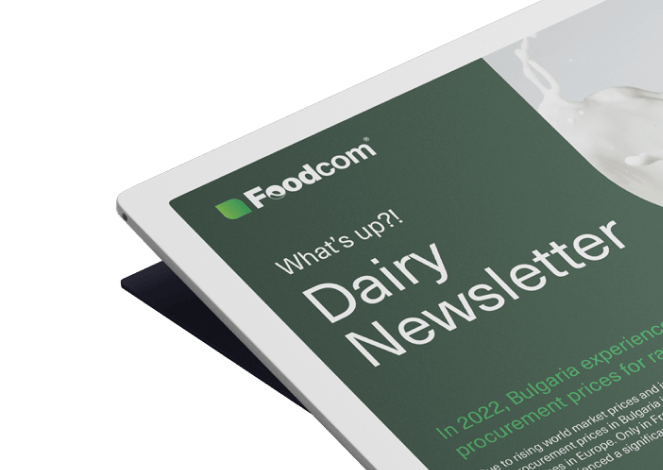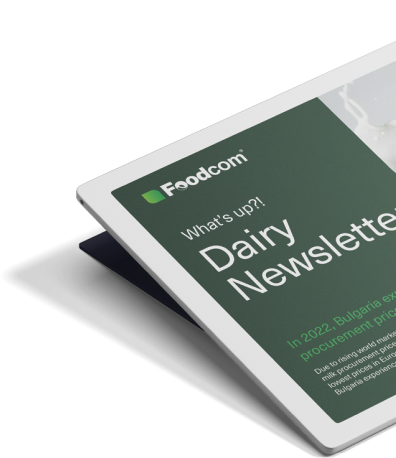- Bird flu caused record losses in egg production in 2024, particularly in the USA and Europe, leading to sharp price increases.
- The increase in demand for processed eggs, such as egg powder, became a key trend, especially in Asia and Latin America.
- In 2025, the egg market will continue to struggle with supply instability and prices could increase by 41% in the US.
- Alternative rearing systems such as deep litter and free range are gaining popularity despite higher prices.
The egg market has been under pressure for several months – not only from inflation or rising production costs. There are further challenges: avian influenza, more expensive feed and growing demand from the food industry and HoReCa sector. As a strategic raw material, eggs are now being closely monitored. At the same time, the growing role of processed forms – especially egg powder, which is used extensively in industrial production and exports – can be seen.
So it is worth taking a broader look at what has been happening in the egg sector in 2024 and what signals the first quarter of 2025 is sending.
Global egg market analysis 2024
2024 proved to be one of the most challenging years for the global egg market in the last decade. A confluence of epidemiological, economic and political factors have affected production, trade and consumption. Although eggs are regarded as a stable food product, recent months have shown that this segment is also susceptible to major shocks.
Bird flu
The year 2024 has gone down as one of the most challenging for the global egg market in recent years. The highly pathogenic avian influenza (HPAI) outbreak hit major producing regions – including the US, Europe and Asia – leading to a sharp drop in supply and historic price increases.
In the US, where more than 170 million birds were culled, wholesale prices reached record levels, and more than 650 outbreaks were reported in Europe between September and December 2024. Prices in the EU reached €270 per 100kg, prompting responses from member states, including the launch of pilot vaccination programmes (e.g. in the Netherlands and France) and increased reserves and imports (Germany).
Despite these disruptions, global demand for eggs remained stable. Consumers in developed countries have reduced their premium purchases, but have not abandoned the product as such. In developing countries – particularly in Asia and North Africa – eggs (including in dried form) remained a key source of protein.
Rebuilding production and international trade
At the end of 2024, the process of rebuilding the laying hen population began. In the US, according to USDA data from March 2025, production was growing at a rate of around 2% per week. At the same time, many countries were struggling with high feed and energy costs and the limited availability of day-old chicks, which was slowing the return to full capacity.
In the face of market tensions, trade cooperation between the US and Turkey became a significant development – in February 2025, Turkey began exporting 15 000 tonnes of eggs to the US, the largest such contract in years and a signal that eggs were beginning to play an increasingly important role in the strategic relationship.
The growing role of processing
As the market sought more stable solutions, processed forms, primarily egg powder, became increasingly important. Its popularity grew particularly in Southeast Asia and Latin America, where the food industry was adapting to the fluctuating availability of fresh eggs. In Mexico, exports of egg powder to Asia increased by 14% year-on-year.
We encourage you to read the recommended article: Egg powder – what is it and what are the advantages of using it in the food industry?
Regional analysis of the egg market (2024 – Q1 2025)
Although the turmoil in the egg market was global, the impact varied regionally. The impact of avian influenza, the level of production recovery and the dynamics of exports depended largely on local circumstances and the response of individual governments.
Europe
Europe was one of the most affected regions in terms of highly pathogenic avian influenza (HPAI). The 2023/2024 season saw a record number of outbreaks, mainly in countries with a high density of poultry production, such as France, the Netherlands, Italy and Germany.
According to EFSA, more than 650 outbreaks of HPAI were reported on poultry farms in the EU between September and December 2024. The largest losses were in laying hens, directly affecting egg supply in member countries.
The response from countries has been mixed, with France and the Netherlands being the first to launch pilot vaccination programmes against HPAI, which may initiate a change in the previous ‘eradicate and isolate’ policy. Germany, on the other hand, increased its strategic reserves and facilitated imports from third countries.
As a result:
- EU wholesale egg prices reached record levels, exceeding €270 per 100 kg (Q4 2024).
- Production is slowly recovering in Q1 2025, but experts estimate that it will take until the end of the year to fully normalise.
North America
The US was one of the most severely affected countries, with more than 170 million birds already culled between the beginning of 2022 and March 2025, a large proportion of which were laying hens.
According to USDA data from March 2025:
- US egg production has started to increase at a rate of around 2% per week.
- Retail prices are still high, but have fallen noticeably from the November 2024 peak.
Latin America
Countries such as Brazil, Argentina and Mexico have not been as severely affected by HPAI, allowing them to capture some exports. Brazil – the leader in poultry meat exports – is expanding its offerings to include eggs and processed products, especially to countries in the Middle East and Asia.
Egg powder production has also increased – particularly in Mexico, where processing is expanding as a response to volatile fresh egg markets. Exports to Asia increased by 14% y-o-y in 2024.
Asia
India, Japan and Indonesia maintained relative production stability. Importantly, in India, growth in domestic demand (particularly in the hospitality sector) is making the market increasingly less reliant on exports.
In Japan, there has been an increase in the production of powdered eggs – particularly for the processing and convenience food industries, whose market share increased by 10.2% y-o-y in 2024.
2025 egg market trends and forecasts
The start of 2025 brings a continuation of the challenges that dominated the previous months. The avian influenza epidemic continues to affect global supply – according to the USDA, more than 166 million birds have already been culled in the US and egg prices could rise by up to 41% this year. Despite attempts to rebuild flocks and increasing investment in bio-insurance, it could take as long as 2026 to return to full capacity in many countries.
Rising egg prices are influencing consumer purchasing decisions, with more than 30% of people in the US saying they have given up until the price drops below $5 per dozen. Among the rest, there is a growing interest in eggs from alternative rearing systems, such as barn or free-range, which, despite the higher price, are seen as a more ethical and quality option. In parallel, the B2B sector is seeing an increase in demand for processed forms of eggs, such as powder or liquid mixes, which allow companies to better control costs and streamline production processes.
Legal changes are also taking place in the background. Some countries are delaying the implementation of non-cage rearing legislation in an attempt to reduce price pressure. However, experts do not agree on the effectiveness of such measures.
The year 2025 will therefore be another period to test the resilience of the egg market – both in terms of supply and consumer purchasing power and the industry’s ability to adapt in the face of further shocks.


2024 was one of the most challenging years for the egg market, both operationally and commercially. In many countries, companies had to adapt purchasing and logistics models at lightning speed, and processed products such as egg powder – more stable, predictable and easier to manage – began to play an increasingly important role. The beginning of 2025 shows some signs of stabilisation, but we are still talking about a market vulnerable to shocks and dependent on external factors. Therefore, a strategic approach to risk, diversification of sources and operational flexibility will be key for companies that want to build a sustainable position in this industry.”
Global Foodcom S.A. reports.
Curious about what’s next for eggs? Discover the latest trends and insights that will shape the final months of 2025. Visit our blog as we regularly update our global reports. Stay up to date with Foodcom S.A.
![Overview and analysis of the egg market in 2026 [Global Report] Overview and analysis of the egg market in 2026 [Global Report]](https://foodcom.pl/wp-content/uploads/2025/04/Global-Report-szablon-pod-bloga-egg-na-bloga-1520x760.png)


![Przegląd rynku mozzarelli w 2025 [Global Report] Przegląd rynku mozzarelli w 2025 [Global Report]](https://foodcom.pl/wp-content/uploads/2025/03/Przeglad-rynku-mozzarelli-w-2025-Global-Report-300x150.png)

![Przegląd rynku masła kakaowego w 2025 [Global Report] Przegląd rynku masła kakaowego w 2025 [Global Report]](https://foodcom.pl/wp-content/uploads/2025/02/przeglad-rynku-masla-kakaowego-w-2025-300x150.png)


